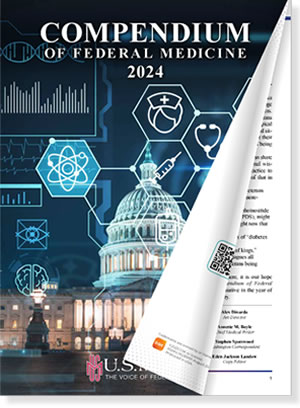DETROIT – With lung cancer the most common cancer worldwide, low-dose computed tomography (CT) scanning has been disappointing for early diagnosis due to the high false positive rate.
That is especially concerning because lung cancer often has poor prognosis despite personalized treatment regimens, according to a report in Cancers (Basel).1
“Other non-invasive means of testing need to be developed that offer both timely diagnosis and predict prognosis,” wrote researchers from the John D. Dingell VAMC in Detroit and colleagues, including from VAMCs in Philadelphia and Durham, NC.
The study team explained, “In the course of stool testing in large-scale testing of 2922 patients at increased risk of CRC, we were able to ascertain 112 patients documented to have prospectively been diagnosed with lung cancer. Stool and colonic effluents were tested for p87 with anti-adenoma antibody (Adnab-9) reactivity by ELISA and Western blot. Survival data were obtained where available.”
Based on their results, of 112 cancers investigated, approximately 27.6% were squamous (SSC), 17.9% were adenocarcinoma, 8% were small cell (SCLC), 6.25% were large cell, 3.57% were designated non-small cell cancer (NSCLC), 0.89% were indeterminate, 0.89% were lepidic spread, 3.57% had metastasis, and in 31.25%, data were unavailable.
In total, the authors pointed out, 49.1% of the lung cancer patients had fecal Adnab-9 testing. Overall, 60% had positive testing compared to 38%, which the researchers deemed significant (OR2.19 [1.06-4.53]; p = 0.045).
“Cancers with higher lethality were less likely to test positive (approximately 8.5% each for both small and large cell lung cancers) and higher, with 56% for SCC and 25% for adenocarcinoma (0% NSCLC),” they noted. “In the larger groups, overall survival was worse in those testing positive: 474 testing positives versus 844 days in SCC and 54 testing positive vs. 749 days in adenocarcinoma patients. Most importantly, the time from a positive test to the clinical diagnosis ranged from 2.72 years for small cell, 3.13 for adenocarcinoma, 5.07 for NSCLC, 6.07 for SSC, and 6.24 for large cell cancer.”
The study advised that, in excluded cases where cancer in the lung was believed to be metastatic, 83.3% of cancers were positive.
“At a projected real-world sensitivity of 0.60 and specificity of 0.60, and the ability to predate diagnosis by up to 4.7 years overall, this test could help direct lung cancer screening,” the researchers emphasized. “In addition, the Adnab-9 testing selectively detects worse tumor types (87.5%) and those with worse prognoses amongst the more common, favorable phenotypes, thus making early diagnosis possible in those patients who stand to benefit most from this strategy. Metastatic lung cancer, also detected by the test, should be identified by the follow-up imaging studies and, therefore, would not be considered to be a major pitfall.
- Tobi M, Ezekwudo D, Tobi YY, Zhao X, Antaki F, Rambus M, Levi E, Talwar H, McVicker B. Historic p87 Is Diagnostic for Lung Cancer Preceding Clinical Presentation by at Least 4 Years. Cancers (Basel). 2025 Mar 12;17(6):952. doi: 10.3390/cancers17060952. PMID: 40149288; PMCID: PMC11940363.

